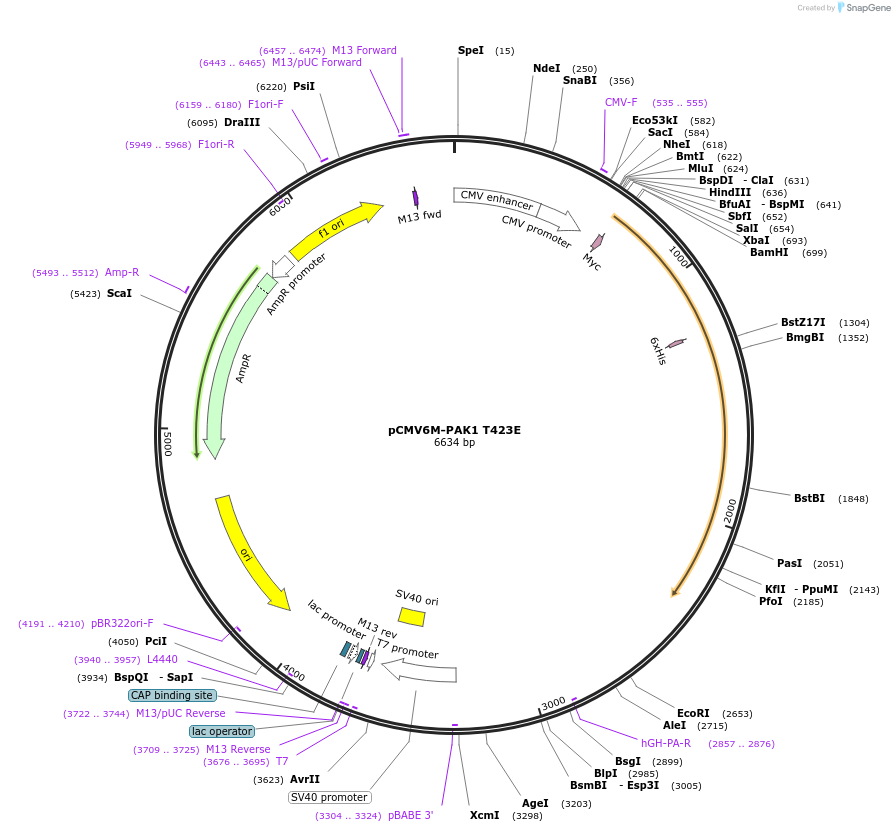-
Depositing Lab
-
Publication
-
Sequence Information
Ordering
| Item | Catalog # | Description | Quantity | Price (USD) | |
|---|---|---|---|---|---|
| Plasmid | 12208 | Standard format: Plasmid sent in bacteria as agar stab | 1 | $89 | |
Backbone
-
Vector backbonepCMV6
- Backbone size w/o insert (bp) 4900
-
Vector typeMammalian Expression
Growth in Bacteria
-
Bacterial Resistance(s)Ampicillin, 100 μg/mL
-
Growth Temperature37°C
-
Growth Strain(s)DH5alpha
-
Copy numberHigh Copy
Gene/Insert
-
Gene/Insert namePak1
-
SpeciesH. sapiens (human)
-
Insert Size (bp)2000
-
MutationActivated Pak1: T423E
-
Entrez GenePAK1 (a.k.a. IDDMSSD, PAKalpha, alpha-PAK, p65-PAK)
-
Tag
/ Fusion Protein
- Myc (N terminal on insert)
Cloning Information
- Cloning method Restriction Enzyme
- 5′ cloning site SalI (not destroyed)
- 3′ cloning site EcoRI (not destroyed)
- 5′ sequencing primer TCGTTTAGTGAACCGTCAG
- 3′ sequencing primer GGAACTTCCAAGGCCAGGA
- (Common Sequencing Primers)
Resource Information
-
Articles Citing this Plasmid
Terms and Licenses
-
Academic/Nonprofit Terms
-
Industry Terms
- Not Available to Industry
Trademarks:
- Zeocin® is an InvivoGen trademark.
Depositor Comments
There is also an additional mutation in this plasmid - L516I. The L516I mutation, or SNP, has been present from the very beginning (~1995). The crystal structure of Pak1 uses this clone, so it is present there too. The depositor does not think it affects function in any way.
Pak1 may contain a G401S mutation. Depositor states that this mutation should not affect plasmid function.
These plasmids were created by your colleagues. Please acknowledge the Principal Investigator, cite the article in which the plasmids were described, and include Addgene in the Materials and Methods of your future publications.
-
For your Materials & Methods section:
pCMV6M-PAK1 T423E was a gift from Jonathan Chernoff (Addgene plasmid # 12208 ; http://n2t.net/addgene:12208 ; RRID:Addgene_12208) -
For your References section:
Human p21-activated kinase (Pak1) regulates actin organization in mammalian cells. Sells MA, Knaus UG, Bagrodia S, Ambrose DM, Bokoch GM, Chernoff J. Curr Biol. 1997 Mar 1. 7(3):202-10. 10.1016/S0960-9822(97)70091-5 PubMed 9395435



